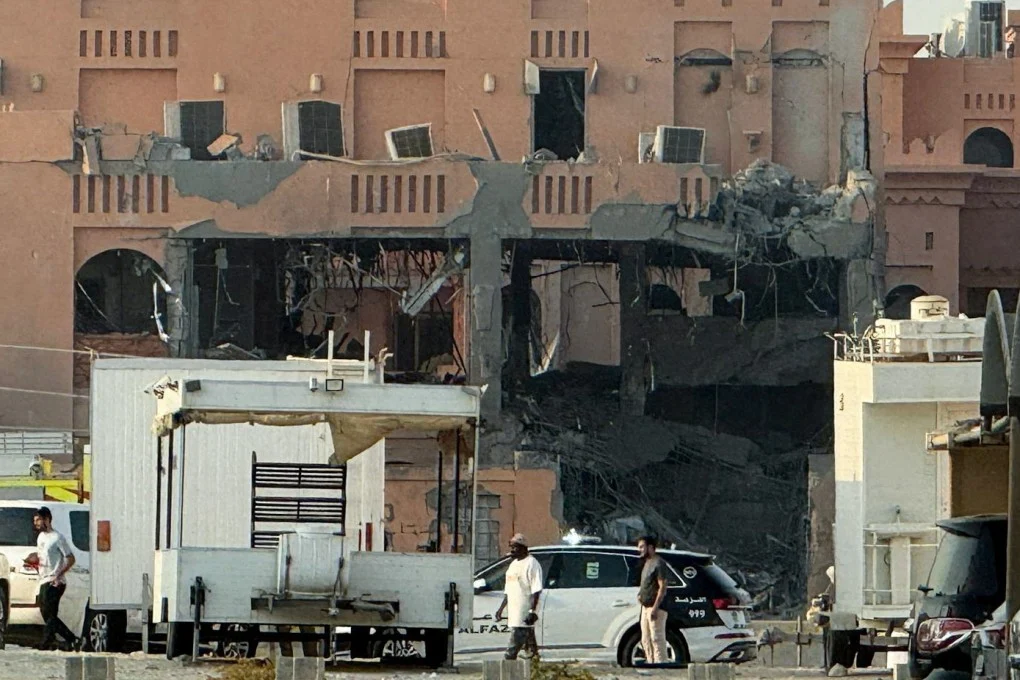Israel's Strike on Hamas Leaders in Qatar (2025)
Assessing Reaction Capabilities Before Action
Introduction
On September 9, 2025, Israel conducted a precision airstrike, codenamed "Fire Summit," targeting senior Hamas officials in Doha, Qatar, as they prepared to respond to a U.S.-backed ceasefire proposal. The operation, involving 15 fighter jets (including F-35 stealth aircraft) and drones firing 10 munitions at a residential compound, killed five to six people, including Khalil al-Hayya's son Humam, a Hamas aide, three bodyguards, and a Qatari Internal Security Force member, while wounding civilians. Hamas leaders, including al-Hayya, Khaled Meshaal, and Zaher Jabarin, survived, but the strike derailed talks for a 60-day truce. Israel justified it as targeting the "architects" of the October 7, 2023, Hamas attack, which killed 1,200 Israelis and took 251 hostages, sparking the Gaza war (over 64,600 Palestinian deaths per Gaza's health ministry). This webpage assesses Israel's pre-strike evaluation of Qatar's reaction capabilities, using a war gaming lens to analyze air defense, political/diplomatic responses, and U.S./regional dynamics as of September 16, 2025.[23][24][25]
Background: The Strike and Its Strategic Context
The airstrike hit a Qatari government-protected compound in Doha's Leqtaifiya district at 3:46 p.m. AST, near schools and embassies, causing explosions and visible smoke. Hamas leaders survived, claiming it confirmed Israel's unwillingness to negotiate peace.[27][29] Qatar, a U.S. major non-NATO ally hosting Al Udeid Air Base (8,000+ troops), has mediated Israel-Hamas talks since 2012, despite tensions over alleged Hamas funding (~$1.8 billion since 2018).[25][34] The U.S.-backed ceasefire proposed a 60-day truce, hostage releases, and prisoner exchanges, but the strike stalled talks, with Hamas rejecting further negotiations.[24] Qatar condemned it as "state terrorism," and President Trump called it an "unfortunate incident" that hindered peace.[23][28]
Assessing Qatar's Reaction Capability: Pre-Strike Evaluation
Israel's operation reflects war gaming doctrine, simulating Qatar's "first reaction" (detection, scramble, diplomatic fallout) to minimize risks. Mossad, Shin Bet, and U.S. intelligence likely evaluated air defense, political restraint, and U.S./regional dynamics. Reports indicate Israel informed the U.S., which warned Qatar, though Qatar claimed notification came 10 minutes after the strike began.[23][28][32]
1. Air Defense and Detection Assessment
Qatar has invested $20 billion in defenses since 2014, including 36 Rafale jets, 24 Eurofighter Typhoons, 36 F-15QA fighters, Patriot PAC-3, NASAMS, and SY-400 missiles, integrated with U.S. Central Command at Al Udeid.[23] However, Qatar's PM admitted radars failed to detect "weapons," likely Delilah cruise missiles, Rampage, or SPICE guided bombs with low-observable capabilities from 150–300 km standoff ranges.[23][27][38] No fighters scrambled, suggesting undetected entry or deliberate non-engagement.[25] Iran's June 2025 Al Udeid strike informed Israel's assessment that Qatar's systems couldn't counter stealthy approaches.[23]
2. Political and Diplomatic Reaction Forecast
Israel anticipated verbal condemnation without retaliation, given Qatar's mediation role and economic stakes (gas exports, tourism). Doha hosts Hamas under U.S. approval, but tensions exist over funding.[25][34] Qatar called it "state terrorism," reserving legal responses (e.g., ICC), but avoided military action.[23][32][40] Regional outrage (Saudi Arabia, UAE) was contained by Abraham Accords and U.S. pressure.[23][32]
3. U.S. and Regional Ally Dynamics
Israel calculated the U.S. wouldn't intervene militarily, given shared anti-Hamas goals. Ambassador Dorothy Shea said the strike didn't advance peace, but Trump focused on hostages.[28][32] U.S. notification timing was disputed, with Qatar claiming it was post-strike.[23][28] This mirrors war games testing passive tolerance.[25]
Attack Execution and Immediate Aftermath
The strike hit at 3:46 p.m. AST, using low-observable munitions avoiding Qatari airspace, with drones for real-time intel.[27][29] It killed six but missed top targets, sending a message: no safe haven for October 7 planners.[23][28] Qatar condemned it without retaliation, searching for two missing and reassessing Hamas's office.[23][32] Regional leaders (Macron: "unacceptable"; UAE: "cowardly") condemned it, risking Gulf instability.[23][32] Ceasefire talks stalled; Hamas rejected negotiations.[24] Netanyahu warned other hosts: "Expel them or we will."[25]
Implications and Lessons from the War Game Lens
The operation exemplifies OODA loop assessment: Qatar's defenses failed detection, politics favored restraint, and U.S. ties buffered fallout.[23][28] It humiliated Qatar, prompting radar upgrades and U.S. reliability questions.[38] Critics call it reckless, prolonging the Gaza war by sabotaging mediation.[32] X posts reflect outrage, with calls for unified Arab response.[0][1][15] Israel's assessment succeeded operationally but at diplomatic cost, exposing mediation vulnerabilities.[23][25]
Conclusion
Israel's September 9, 2025, strike on Hamas leaders in Qatar demonstrated meticulous pre-strike assessment of Qatar's reaction capabilities, leveraging stealth technology, political restraint, and U.S. dynamics to execute "Fire Summit" with minimal immediate retaliation. While operationally successful in signaling no safe haven for October 7 planners, it stalled ceasefire talks, strained U.S.-Israel ties, and risked Gulf instability. Qatar's humiliated response—condemnation without escalation—prompts defense reviews and mediation challenges. The war gaming approach paid off tactically but at significant diplomatic cost. Monitor UN and U.S. State Department updates (https://www.state.gov) for developments.[23][25]
Sources
- [0] X Post, September 10, 2025
- [1] X Post, September 11, 2025
- [15] X Post, September 12, 2025
- [23] Israel Airstrike on Hamas in Qatar, Al Jazeera
- [24] Israel Strikes Hamas Leaders in Qatar, Reuters
- [25] Israel Targets Hamas Leaders in Doha, Times of Israel
- [27] Israel Strikes Hamas in Qatar, BBC
- [28] Israel Strikes Hamas in Qatar, CNN
- [29] Israel Strikes Hamas in Qatar Analysis, Haaretz
- [32] Israel Strikes Hamas Leaders in Qatar, France 24
- [34] Israel Strikes Qatar Hamas Leaders, Washington Post
- [38] Israel’s Qatar Strike: Strategic Implications, Jerusalem Post
- [40] Israel Strikes Hamas in Qatar, NBC News
